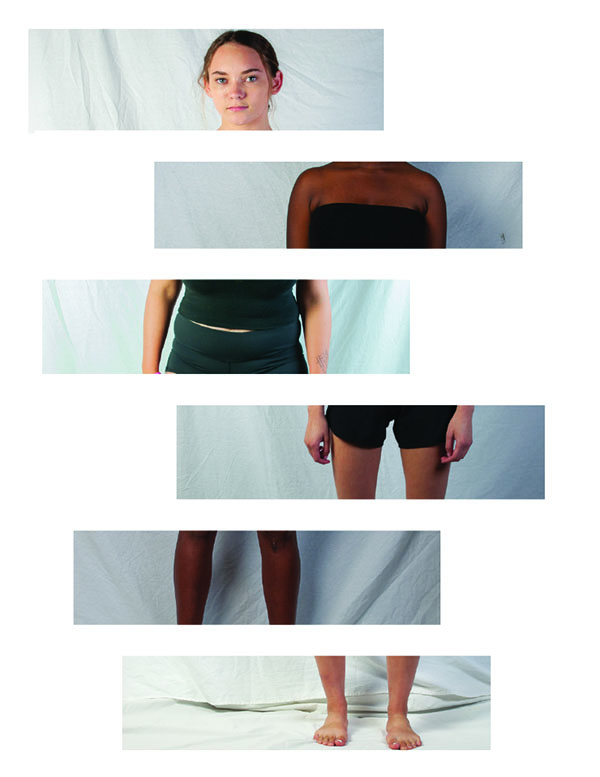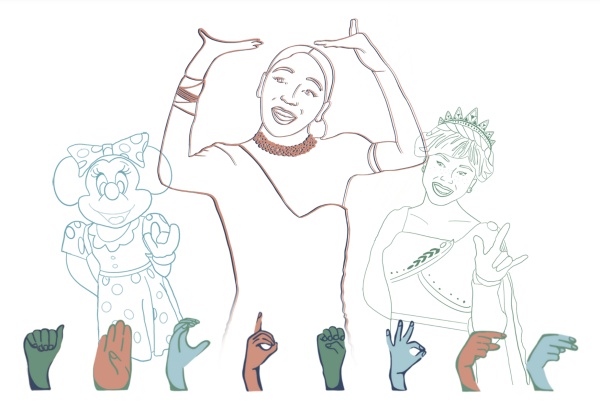Diversify
The movement towards accepting beauty— different body sizes, shapes and skin tones— has mobilized across the country. These movements combat the construct of ideal images of beauty and empower men and women alike.
 In today’s world, social progress is strategically influenced by major corporations to include branding as part of every movement. Whether it’s the Black Lives Matter movement or the MeToo campaign, companies alter themselves to utilize media momentum. Before early 2015, there was an absence of gender neutral clothing, but over the years clothing brands producing these have slowly become more dynamic and found their way into the racks of popular brands such as Target and Asos.
In today’s world, social progress is strategically influenced by major corporations to include branding as part of every movement. Whether it’s the Black Lives Matter movement or the MeToo campaign, companies alter themselves to utilize media momentum. Before early 2015, there was an absence of gender neutral clothing, but over the years clothing brands producing these have slowly become more dynamic and found their way into the racks of popular brands such as Target and Asos.
Kate Milne, a member of Girls Learning International, finds importance in promoting men and women to have equal ability to present themselves individually.
“Society is set up so individuals are expected to choose either a masculine or feminine style from infancy,” Milne said. “I think that if someone wants to dress in a way that isn’t traditional, or exclusively masculine or feminine, then all the power to them.”
Not all brands have joined onto this movement, however. Some companies have retained an exclusive image by solely providing “one size fits all” sizing in their collections. This includes clothing brands such as Brandy Melville and Tiffosi, both of which cater to younger consumers.
As a sales associate at Brandy Melville, Palo Alto High School senior Maddie Lindsay has seen girls come in thrilled to shop, only to be pushed away when the clothes are unable to fit all shapes and sizes.
“Brandy Melville is [considered] the most popular store among teens nowadays, and it makes people feel so insecure when they can’t fit into their clothes,” said Lindsay. “They want to fit in with everyone else and wear [Brandy Melville clothing], but they can’t.”
Tiffosi, a Portuguese clothing brand, sells one-size jeans, but with an alternate approach: they are advertised as fitting sizes 00-12. The jeans are made with 3% elastane for a higher degree of stretch, allowing more sizes and body types to fit into them.
Lindsay attributes this marketing strategy to production productivity. “This way, they can mass produce,” she said. “They don’t have to worry about sizing or spending more money on the extra fabric for bigger sizes.”
Instead of producing a wide variety of merchandise, mass production allows for more units to be exported in a shorter period of time. Not only is it easy and efficient, but it maintains lower labor costs so companies benefit more from their capital. However, their desire for profits can be outweighed by the loss of customers who cannot purchase their clothes. Tiffosi, who also benefits from the mass production of one-size clothing, instead keeps their profit low while simultaneously reaching a wider customer base.
Beyond the fashion realm, the exclusion of specific categories of consumers is fairly common in the beauty industry. Some cosmetic brands, under scrutiny due to the production of makeup lines with limited shade ranges, leave many consumers unable to find their true match, specifically men and women of color.
Anne Igiebor, a makeup artist who has been practicing professional makeup for the past six years, has experienced this discrimination firsthand.
“I’ve never had a perfect [foundation] match for myself and most times have to mix shades for clients,” Igiebor said. “That would [imply that companies] do not think people of color matter.”
As someone who is constantly accentuating appearances through the art of makeup, Igiebor has seen just how much variety there can be when it comes to complexion. While the exclusivity within a few makeup products affects her professional and personal life, she still hopes for more businesses to advocate for increased diversity and equality no matter the costs.
“With the rise of new beauty and indie brands that have decided to focus on this problem, it seems reassuring that it will only get better,” Igiebor said.
A popular cosmetics brand, Glossier, is among those with a limited shade range. The company released both a concealer and “perfect skin tint” that solely offered five shades. While the majority of the public raved about the company as a whole, they stated that they were unable to attain the right shade without mixing multiple together.
Other retailers have branched out, including Cover Girl, who named social media influencer and makeup artist, James Charles, as the newest Covergirl. The title itself portrays the brand’s roots of targeting only women, but with the recent progressive steps the brand has taken, it is apparent that the tradition no longer remains. This addition is representative of the shift towards widening their target market and ending gender-specific associations with makeup.
Mixed opinions have arisen concerning what types of products companies should produce and what their audience should be. In the recent decades, the definition of beauty has transformed to incorporate a wider range of body types and skin tones. While much progression has already occured, many companies continue to promote previously established norms that heavily contrast those of the current day. As more movements centered around body positivity have gained momentum, the future conformity of many fashion and beauty companies remains uncertain.






